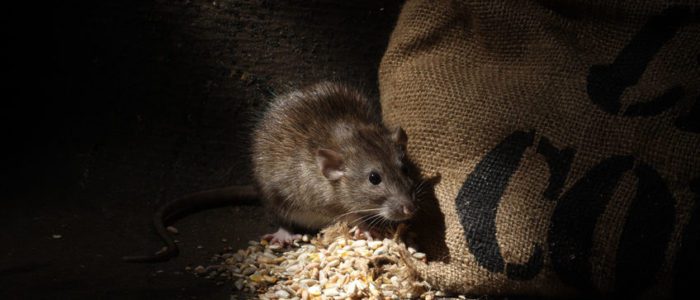Rats Will Go To Great Lengths To Access Food Scraps And Water, Including Eating Through Garbage Bins
The Norway rat is the dominant rat species throughout urban and suburban areas of New York state. These rats are grey to brown in color, and most individuals have a light-colored to white patch of belly-fur. The average Norway rat specimen is around eight inches in length, and a little more than one pound in weight, but well-fed rats that inhabit big cities where food sources are abundant are generally larger than average in size.
Rats frequently damage plaster, wood, insulation and other materials in an effort to gain entrance into structures. They also pose a significant public health threat, as rats contaminate indoor surfaces and stored food items with their excrement and saliva, which contain several disease-causing microorganisms. In very old and large homes and buildings, rats can be almost impossible to completely eliminate. In cities, rats are prevalent due to area-wide human activity, making one single homeowner limited in his/her ability to control the pests. However, making sure that rats are unable to access human foods and water sources within and around homes is the best way to prevent rat pest issues.
In an effort to access food waste, rats have been known to gnaw through durable plastic garbage bins, and such damage is frequent in metropolitan areas where rats can rely on easy access to resources. In most cases, rats find their way into the interior of garbage bins by gnawing around handles and at the corners of lids. Garbage bins containing stored dog food also sustain damage of this sort. In areas where rats have returned to residential garbage collections near houses for feeding purposes, metal garbage bins may become necessary to prevent further issues with the pests. Rats are surprisingly capable of accessing garbage and stored food within plastic bins, but other forms of wildlife, notably raccoons, are in the habit of spreading garbage around homes while rummaging for food. When this occurs, rats are more likely to become pests around a home than the wildlife responsible for making the mess.
Have you ever discovered any rat-inflicted gnaw marks on any of your outdoor possessions?


Comments are closed.